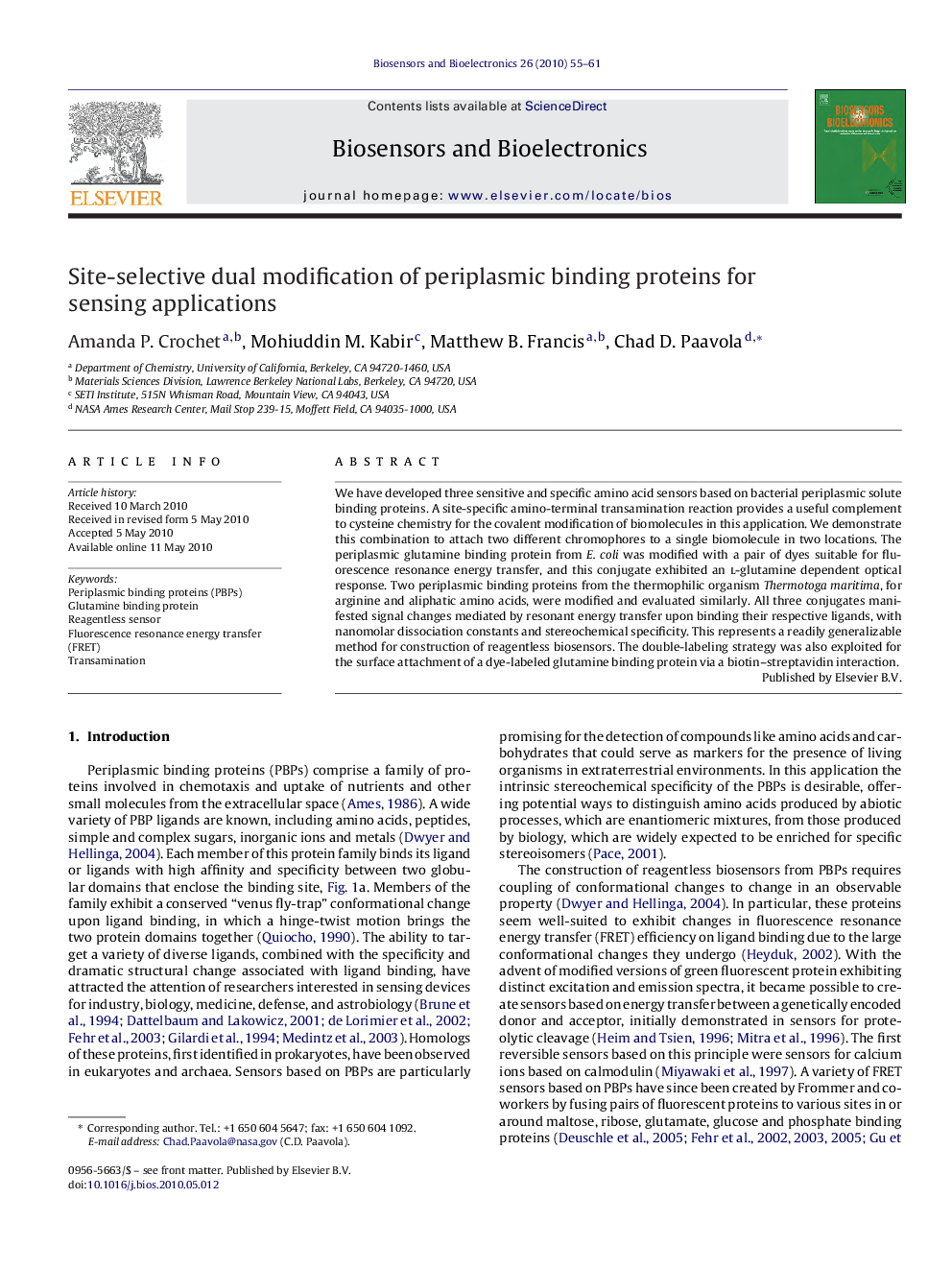| Article ID | Journal | Published Year | Pages | File Type |
|---|---|---|---|---|
| 867932 | Biosensors and Bioelectronics | 2010 | 7 Pages |
We have developed three sensitive and specific amino acid sensors based on bacterial periplasmic solute binding proteins. A site-specific amino-terminal transamination reaction provides a useful complement to cysteine chemistry for the covalent modification of biomolecules in this application. We demonstrate this combination to attach two different chromophores to a single biomolecule in two locations. The periplasmic glutamine binding protein from E. coli was modified with a pair of dyes suitable for fluorescence resonance energy transfer, and this conjugate exhibited an l-glutamine dependent optical response. Two periplasmic binding proteins from the thermophilic organism Thermotoga maritima, for arginine and aliphatic amino acids, were modified and evaluated similarly. All three conjugates manifested signal changes mediated by resonant energy transfer upon binding their respective ligands, with nanomolar dissociation constants and stereochemical specificity. This represents a readily generalizable method for construction of reagentless biosensors. The double-labeling strategy was also exploited for the surface attachment of a dye-labeled glutamine binding protein via a biotin–streptavidin interaction.
